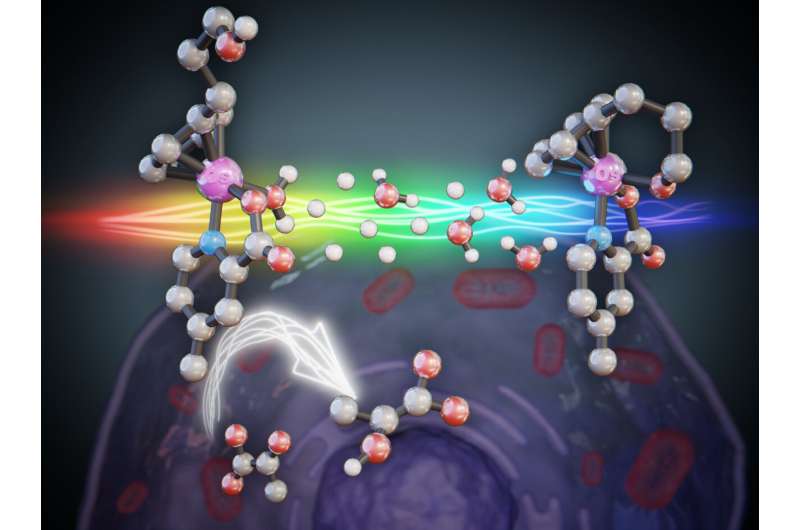Osmium activation in cancer cells

Cancer is a complex disease, and as such, there is no single way to tackle it. While cancer treatments are evolving toward personalized procedures, in most cases, standard chemotherapy treatments are still required. In chemotherapy, platinum drugs such as cisplatin (approved 42 years ago by FDA) are used, killing both cancerous and healthy cells and causing unwanted sided effects. In this regard, there is plenty of room for improvement for clinical treatments.
New drug candidates based on organometallic compounds are currently under investigation to see how they can be activated (light, pH) and specifically intervene only in cancer cell processes (for example, affecting cancer cell metabolism).
The Metallodrugs Group at IMDEA Nanociencia, led by Dr. Ana Pizarro, focuses on exploiting the peculiar nature of transition metals and the unique types of chemical interactions that these metals can carry out inside the cell. This uniqueness of metal-based drugs, in combination with current knowledge in molecular biology, allows for the development of new compounds for more specific and targeted chemotherapies as a natural step forward.
In their recent Chemical Science publication, Pizarro and co-workers study the possibilities of osmium (Os) to modify the cancer cell machinery. These compounds are largely unexplored due to their apparent inertness. The group saw an opportunity to exploit this inertness in order to control their reactivity in the cell. They discovered the unprecedented reactivation of an osmium compound in aqueous solution by introducing in the structure a pendant terminal alcohol that furnishes the complex with an entirely new reactivity profile.
Osmium arenes often generate inactive species due to the acidity of the metal. The Os-OH triggers intramolecular rearrangement culminating in the binding of the pendant oxygen to the metal center (formation of a closed tethered complex), thus protecting the complex toward irreversible inactivation—the otherwise unreactive osmium species reactivates thanks to the tethered alcohol.
"Transition metals in general can be promiscuous; they try to catch every atom around them. We thought we could exploit the inherent inertness of osmium to fine-tune its metal-based reactivity," says Dr. Pizarro. "If we are to create useful tools to manipulate the cancer cell we must take advantage of this fine balance between metal-reactivity and inertness, unique to organometallics."
The activity of osmium compounds was tested within breast cancer cells in vitro. It was found that these compounds help convert pyruvate to lactate, both of which are essential metabolites in the intricate metabolism of the cancerous cell.
This fundamental research adds to the knowledge of organometallic compounds modulating cell machinery towards fighting cancer. The Pizarro group have demonstrated that the osmium compounds can be candidates for modulating the lactate/pyruvate balance within human cells, a crucial aspect of cancer progression.
More information: Sonia Infante-Tadeo et al, Osmium(II) Tethered Half-Sandwich Complexes: pH-dependent Aqueous Speciation and Transfer Hydrogenation in Cells, Chemical Science (2021). DOI: 10.1039/D1SC01939B
Journal information: Chemical Science
Provided by IMDEA Nanociencia



















